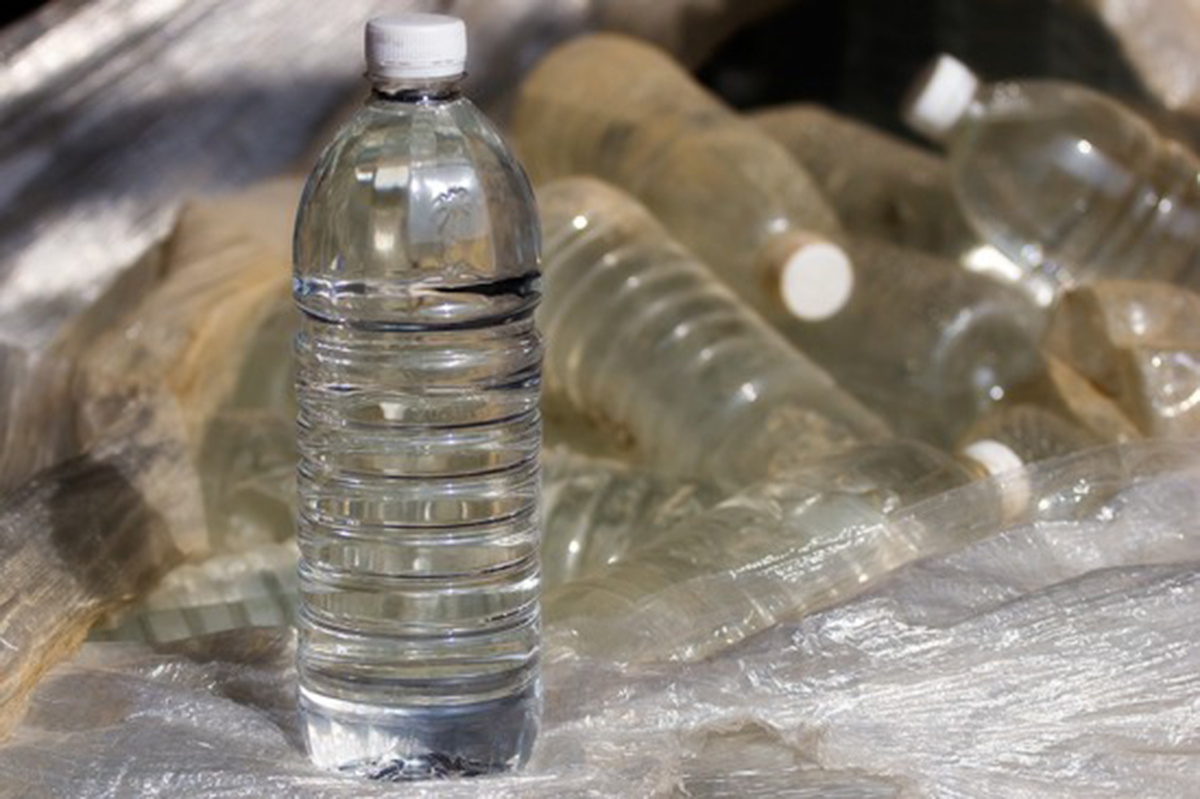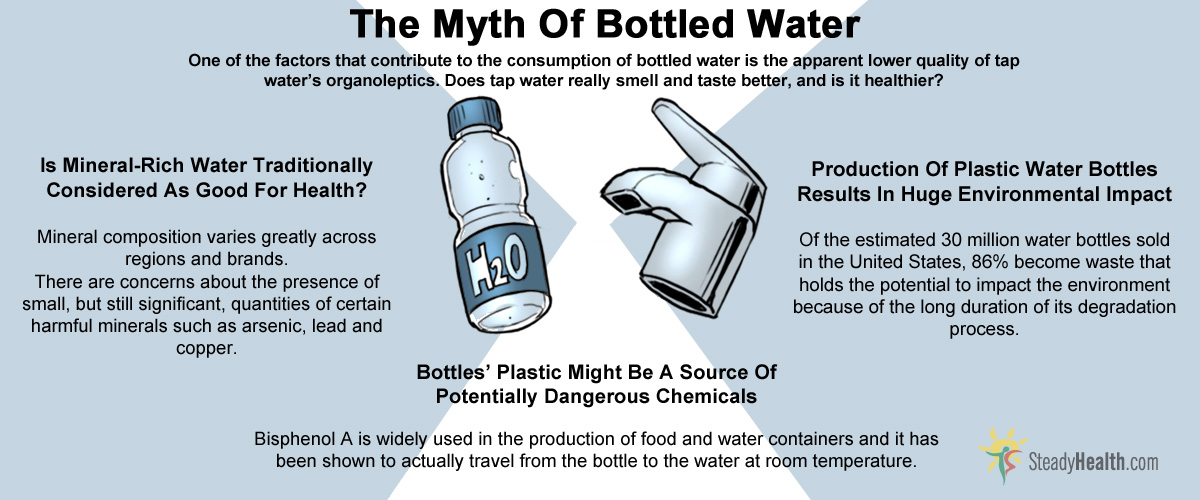Regardless of the route drinking water follows to get to people’s houses, the fact is that safe drinking water is essential in everyone’s daily lives — for drinking, cooking, and washing food. For some people, tap water fits their needs perfectly. For others, water that comes packaged in a bottle represents the best solution. In fact, bottled water sales have increased significantly in the past few years. Americans spend billions of dollars per year on water bottles, making this type of water the fastest growing drink of choice in the U.S.A. Retail bottled water, the one people generally have access to and consume, accounts for 80% of the bottled water market and it is also its fastest growing segment of the market. Bottled water consumers ingest an average of 736 mL per day.
Why is bottled water so popular?
One of the factors that contribute to the consumption of bottled water is the apparent lower quality of tap water’s organoleptics, that is, the smell, taste and color of tap water.
Indeed, much of the popularity of bottled water arises from the belief that tap water possesses a characteristic and less desirable taste that bottled water options do not have. However, there is no robust scientific evidence that actually supports the alleged superior taste of bottled water, which is produced at varying levels of the quality spectrum and certainly is not all spring water. Because tap water supplies vary greatly all over the world, it is nearly impossible to obtain consensus regarding this topic, but many people believe that if tap water does have some particular taste, that is due to the presence of chlorine, a safe disinfection substance used by most tap water suppliers that does impact the taste.
Bottled water suppliers prefer more complex disinfection methods, such as ozone or UV light, thus avoiding the traditional "tap water taste". According to the US Environmental Protection Agency, it is important to note that bad taste does not necessarily mean bad water. Likewise, a lack of odor or color does not mean the water is safe, as bacteria and chemicals can be odorless and tasteless but still dangerous. This is an interesting point to enlighten, as it has been examined that organoleptics influence people’s perception of what is safe and healthy. But, for example, the presence of certain microorganisms typically does not alter water’s taste and it still makes it dangerous.
Read More: What Plain Old Water Can Do For Your Health
Other reasons behind the high consumption of bottled water in the U.S. include the perceived health benefits of drinking such water versus tap water. Although consumers don’t necessarily see tap water as unsafe, they consider bottled water to have a better effect on their health. In a study conducted at the University of Birmingham, UK, it was found that most people believed bottled water to provide them with additional health benefits when compared to tap water, although the majority of them acknowledge these benefits to be negligible.
Health Benefits Of Bottled Water Are Difficult To Measure
Assessing the possible benefits and risks of consuming bottled water holds a great complexity, because of the great variation between water sources, brands, processing methods and other factors. Moreover, the general low risk for health problems arising from bottled water consumption makes it nearly impossible to conduct a scientifically sound study – known as randomized controlled trial – similar to those conducted to evaluate the safety of a new drug. Thus, all existing data come from mere observations.

Many advocate the usage of bottled water as a means to avoid pathological microorganisms and prevent serious infections. For example, in one case-control study of adults who had HIV, users of unboiled tap water were four times more likely to have cryptosporidiosis than were users of bottled water. Still, the evidence linking bottled water consumption to a decreased risk of infection is fairly limited.
In a meta-analysis conducted by a group of primary care physician from Louisville, it was noted that there is simply not enough evidence to support the use of bottled water in reducing the risk of infection – not even in those whose immune system is severely compromised, such as in the case of HIV and AIDS patients. This type of argument would only make sense, of course, in areas where there is a known compromise of public water supplies.
Minerals-rich water is traditionally considered as good for health
Consuming mineral water has long been seen as carrying numerous health benefits. Several clinical studies have confirmed that consuming bottled water enriched with certain minerals, such as calcium or magnesium, can have a beneficial influence in certain patients, for instance by reducing one’s risk for osteoporosis or ischemic heart disease. Nevertheless, it wouldn’t be prudent to generalize mineral-enriched bottled water’s health benefits, because mineral composition varies greatly across regions and brands. And while some defend the health benefits of water with high levels of mineral content, others express their concern regarding the presence of small, but still significant, quantities of certain dangerous minerals. These include arsenic, lead and copper. Collectively, long-term exposure to these substances is known to cause a variety of ailments, from cancer to cognitive changes in children and even depression and high blood pressure. In the U.S., no studies have been conducted so far regarding the bottled water’s content of the mentioned minerals, but in India 7 out of 17 bottled water samples tested were found to have abnormally elevated lead levels.
Plastic water bottles might be a source of potentially dangerous chemicals
There is also a widespread concern regarding the negative influence of compounds migrating from the plastic from which the bottles are manufactured to the water itself. Bisphenol A (BPA), in particular, is widely used in the production of food and water containers and it has been shown to actually travel from the bottle to the water at room temperature, although it does so at a very low rate. Since the studies of the actual negative impact of Bisphenol A on the human body are still lacking, the FDA does not currently advise consumers to avoid bottles with Bisphenol A in their composition.
Read More: Why You Should Drink Water: Find Out How Water Affects Your Health And Your Body
Production of plastic water bottles results in huge environmental impact
Consuming bottled water also, logically, means incresed consumption of bottles. Of the estimated 30 million water bottles sold in the United States, 86% become waste that ends up in landfills, which holds a huge potential for negatively impacting the environment because of the long duration of its degradation process. This leads to water, soil and, eventually, animal contamination. Water bottles are commonly made of PET plastic, which derives from crude oil. In order to manufacture the above-mentioned 30 million water bottles, 17 million barrels of oil are used. Plus, the process of bottling the water produces more than 2.5 million tons of carbon dioxide. Regarding the water used to produce these products, the Pacific Institute estimates that for each liter that is actually sold, three liters are spent in the production process. To fight the increasing use of plastic bottled water, several governments and local authorities have developed initiatives to stop the purchase of this type of water with public funds. This happened in Paris, France; Liverpool, UK; San Francisco, California; and the state of Illinois, among others. UNICEF’s Tap Project, Inside the Bottle, and Think Outside the Bottle, are national campaigns against bottled water.
The increasing consumption of bottled water comes with a huge financial and environmental toll. Globally held beliefs about the influence of bottled water to one’s health are largely exploited by marketing departments. However pure or mineral-enriched a product might be, there are too many variables that need to be taken into account to establish that a specific bottled water product is actually superior to tap water.
Nowadays, tap water follows as a strict set of quality requirements as bottled water in many jurisdictions. Unless your local tap water is known to be unsafe for drinking, using tap water is the more environmentally friendly choice — and that ultimately means the better choice for your health, as well, because, after all, you have no choice but to live in the environment.
- EPA 2005. Bottled Water Basics
- NAPIER, G. L. & KODNER, C. M. 2008. Health risks and benefits of bottled water. Primary Care: Clinics in Office Practice, 35, 789-802
- GOLDSTEIN, S. T., JURANEK, D. D., RAVENHOLT, O., HIGHTOWER, W., MARTIN, D. G., MESNIK, J. L., GRIFFITHS, S. D., BRYANT, A. J., REICH, R. R. & HERWALDT, B. L. 1996. Cryptosporidiosis: an outbreak associated with drinking water despite state-of-the-art water treatment. Annals of Internal Medicine, 124, 459-468
- DORIA, M. F. 2006. Bottled water versus tap water: understanding consumers' preferences. Journal of Water and Health, 4, 271-276
- WARD, L. A., CAIN, O. L., MULLALLY, R. A., HOLLIDAY, K. S., WERNHAM, A. G., BAILLIE, P. D. & GREENFIELD, S. M. 2009. Health beliefs about bottled water: a qualitative study. BMC Public Health, 9
- Mindmap by steadyhealth.com
- Photo courtesy of Todd Morris by Flickr : www.flickr.com/photos/alohateam/4300305642/
- www.bottledwater.org/economics/bottled-water-industry
- www.sciencedirect.com/science/article/pii/S0095454308000481
- annals.org/article.aspx?articleid=709491
- www.iwaponline.com/jwh/004/0271/0040271.pdf
- www.biomedcentral.com/1471-2458/9/196
- www.pacinst.org/publication/bottled-water-and-energy-a-fact-sheet/
- www.huffingtonpost.com/norm-schriever/post_5218_b_3613577.html



Your thoughts on this